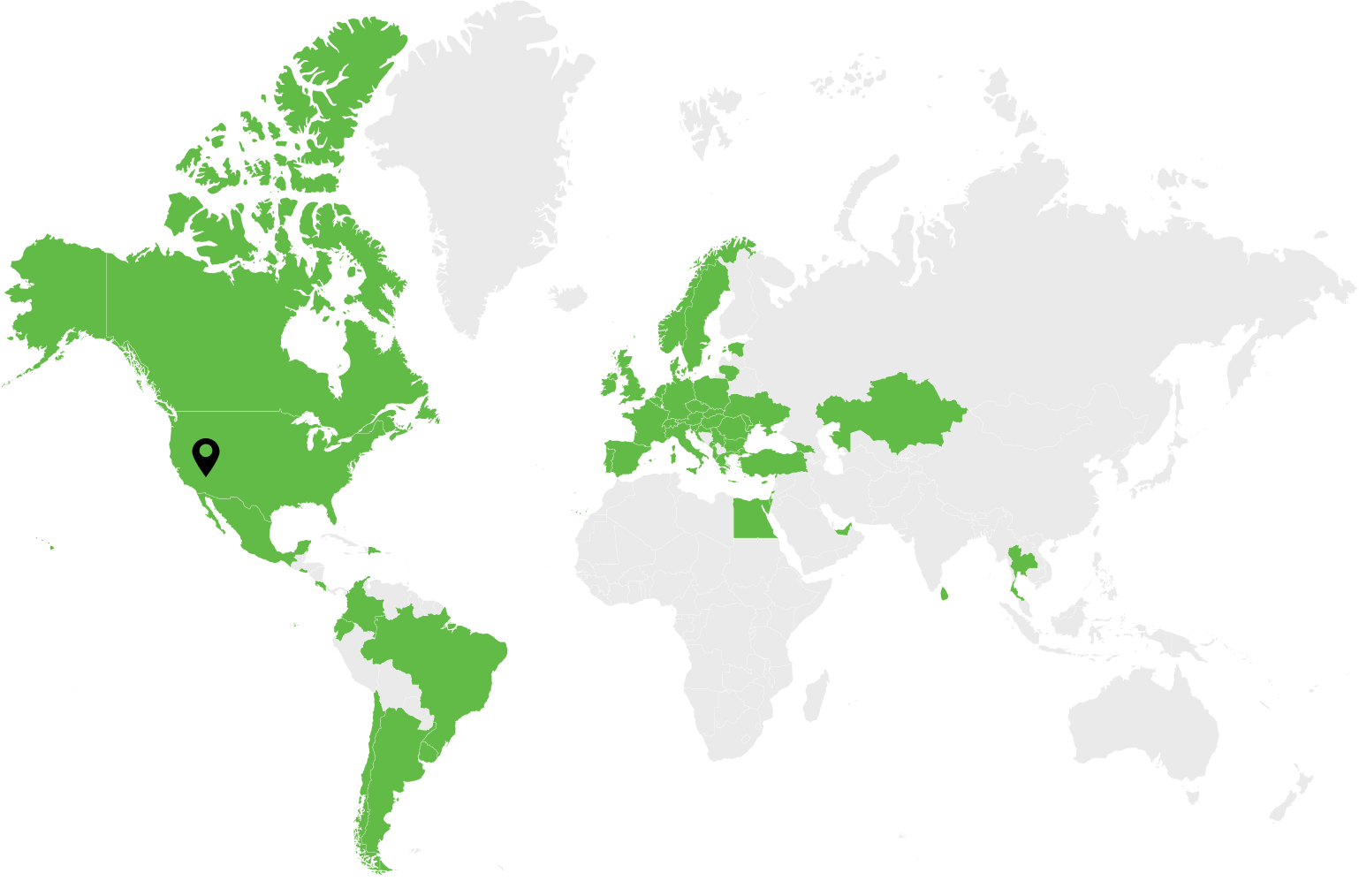Cloud-based testing is faster to roll out than conventional testing modes, boasts endless elasticity, and costs less. While it’s not without its drawbacks, the speed of cloud technology adoption illustrates that those advantages resonate with many business minds.
According to Flexera 2021 State of the Cloud Report, 92% of the enterprises have a multi-cloud strategy and 82% enjoy all the privileges of the hybrid environment. This means that less than 10% of companies use fully on-prem deployments.
The cloud era is here, and so is the epoch of cloud based testing.
AWS, a leader among cloud services providers, has plenty of use cases where timely testing has helped boost some facet of the client’s performance. For example, an Australian fintech neobanking company called Hay increased new user conversion by 300%. A sudden drop off in users in the early days of downloading the app allowed the company to pinpoint and address the issue at fault within 1.5 weeks of testing.
With 10 years of experience in software development, the DevPro team has kept an eye on the latest developments in the cloud ecosystem.
What is Cloud Testing?
Cloud testing may narrowly refer to at least three somewhat different concepts, depending whether the process refers to testing cloud providers, services deployed on cloud, or using cloud tools:
- Testing cloud services and providers, like AWS, GCP, etc.;
- Testing applications and software that are fully or partially deployed on cloud;
- Testing software or applications with the help of cloud tools
Yet the more general understanding of the term defines:
Cloud testing is a subset of software testing and quality assurance that is performed in the cloud based environment. Cloud testing would usually aim to check the performance, compatibility, latency, reliability of the tested system.
How does Cloud-Based Testing Work?
Cloud-based testing is the go-to method for scaleups, and is often chosen for its nearly endless capacity to scale, and its ability to conduct multiple tests across different geo zones, devices, platforms without much prep time or upfront investments.
Its algorithm has some unique steps that are different from conventional on-prem QA testing practices, yet share most stages of the workflow. These are the major phases of the process:
- Research business case requirements
- Choose cloud service vendor
- Decide on test strategy and objectives
- Elaborate user scenarios and test cases
- Select the tools, set up test infrastructure
- Define parameters of the test
- Launch the test
- Collect data
- Register results, analyze
- Report findings and how they align with the test’s objective
Types of Testing in the Cloud
Similarly to bare metal testing, testing in the cloud is divided into two main categories: functional and non-functional. This is how they differ:
Functional Testing
Functional testing is a subset of QA processes that aims to test if a certain feature or function of a software system or application works as it’s intended to work.
The majority of the functional tests can be operated on cloud environment, including:
- Acceptance testing
- Smoke testing
- System verification testing
- Usability testing
- Interoperability testing
- Localization Testing
Non-Functional
Non-functional testing, on the other hand, does not care if features demonstrate themselves or if they function as designed, but rather concentrates on testing how the system itself operates and its inner workings.
These are some of the non-functional tests, some of which are similar and can be used interchangeably:
- Compliance testing
- Compatibility testing
- Load testing
- Cloud performance testing
- Volume testing
- Endurance testing
- Recovery testing
- Availability testing
- Accessibility testing
- Security testing
Benefits of Cloud-Based Testing
Cloud is the answer to many of the questions QA engineers used to have before the emergence of technology. Just take a look at these examples:
Global Reach for the Era of Remote Work
- Teams can work from anywhere in the world collaboratively, regardless of time zone differences or geographic location;
- Teams can implement multi-cloud checking for reliability and compatibility using different cloud providers;
- Teams can amplify user experience testing by using different geo zones.
Parallel Test Automation Scenarios
Automation in cloud computing offers nearly unlimited resources, which is a sizable advantage. QA engineers can run multiple scenarios simultaneously, for example, both mobile and desktop platforms can run test automation scenarios in parallel.
Up-To-Date Testing Environments: Mobile and Browser Updates
Running a test on an outdated platform does not guarantee the same results for new software release updates. Getting your hands on new iPhone models right after release is an endeavor in and of itself. Mobile provider and browser cloud test environments are always synced to their latest software and hardware versions.. Moreover, cloud providers arm their users with a set of tools to run automation on any platform, device, browser, or version of software.
Rollback-Friendly Tracking, Logging, and Monitoring
Things can go wrong and when they do, QA engineers and performance engineers can feel less stressed when performing cloud testing. Due to the cloud’s ample and elastic memory and computing resources, cloud systems are better equipped for accurate detailed tracking, logging, and disaster recovery.
You Pay Only for What you Use
With conventional on-prem testing environments, QA engineers sometimes need to create an exact copy of the production environment. This requires expensive hardware and software. The cloud’s elasticity allows you to start paying when you start using computing capacity and stop paying when you are done. It’s cost effective.
Reasons to Use Cloud Automation Testing
Cloud Automation Testing has multiple advantages that a Singapore-based big data company called Crayon Data took full advantage of. When the company switched to AWS, they needed to ensure that deployment was possible individually for different clients inside their main product: recommendation engine Maya. Scalability and security were also top of mind.
After implementing cloud automation testing, Crayon Data managed to reduce costs by 10% and drive performance up by 20%, as well as reduce the testing cycle from up to 11 days to two days per release.
These are other common reasons why companies implement Cloud Automation Testing:
You Need to Run Resource-Heavy Tests
Scalability is probably the main reason, right after reasonable and predictable costs, that QA and DevOps engineers prefer to test in the cloud. If you have to test multiple simultaneous tests requiring huge capacity, you might want to check out the cloud alternatives.
Your Teams Appreciate Visibility and Control over Test
During software testing, things can go wrong. Some tests are conducted in the development and staging environments, but others are executed in the production setting. This is why employees across different teams need access to the same modules of the testing software at the same time, which is how cloud operates.
Access to real-time data and test developments helps teams take preventative, proactive, and reactive actions, communicate instantaneously and implement adjustments.
You Expect a Thorough Analysis of the Results
Timely technical system improvements and forward-looking business decisions are the optimal outcome for any test. Ideally, your QA team doesn’t just run the tests and leave the logs alone, but will take time to drill down into the results. This kind of analysis will help enhance technical parameters and can be fertile ground for fact-driven strategic decision making.
The elastic and scalable cloud environment is good for coupling the test lab with the latest reporting and analytics software. It’s during the dissection of the log results that the main bottlenecks are revealed and new directions forward are devised.
You Need Agility Across the Board
Speed is vital if you release updates often and your users expect the best from your product. You need to release new features into production and ensure they work across all platforms, devices, and providers. If you can’t afford to be creating test environments for weeks, but need to launch a few tests every day with the shortest window from ideation to implementation, cloud is the best way to go.
Cloud Software Testing Best Practices
Cloud based testing is evolving as we speak. Platforms, network vendors, and devices constantly get new updates, Gartner adds new challengers and visionaries to the Magic quadrant TM for Software Test Automation, and cloud providers invent new tools and best practices.
This is why our most important best practice is: never assume you know it all. Always be on the lookout for new knowledge, developments, and expertise.
- Map out the cloud tools and services used for a software or application before you start planning the test itself.
- Review your existing test strategy or create one from scratch that includes all the technical particulars of the cloud deployment [migration and CD validations].
- Plan how you will get test data ready for a sandbox or non-production environment deployment.
- Ensure you double-check cloud services SLAs to draw a clear demarcation line between ownership of all types of validation [functional, performance, security, etc.].
- Elaborate the process of error correction with your cloud provider.
- Appoint owners in-house for those validations owned by your company as per SLA.
- Establish and nurture a culture that incentivizes ongoing education about testing cloud based applications and software solutions.
Cloud Testing Strategy: Where to Start
There is a good chance that your company is part of the roughly 80% of businesses that have a hybrid multi-cloud pool setup. This means you have a few cloud service vendors to choose from for your testing environment.
Before choosing the vendors and tools, designing the test and writing scenarios, estimate if your company has sufficient expertise to plan, script, execute, and analyze the test. If you are not quite sure if your QA team and Cloud engineers are knowledgeable enough, the best way forward is to conduct a full-fledged RFP [Request for Proposal] process for cloud testing consultancy services.
Hiring an outsourced team of QA and cloud engineers for the task is easy. DevPro can help you conduct functional and non-function tests across multiple platforms, devices, and providers — all while working on the cloud. Looking to ensure high customer satisfaction, quick response time, scalability, and minimal downtime? Tell us know about your requirements using this form and we’ll send a comprehensive technical offer with deadlines and budgets within 24 hours.


